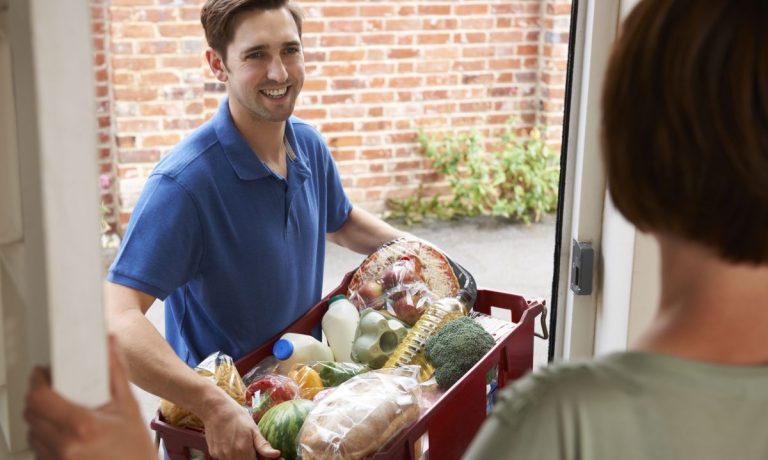Shoppers Seek More Accessible Grocery Options From eCommerce Marketplaces

Consumers find stores’ own online grocery platforms more accessible than third-party marketplace offerings, bucking broader retail trends. Now, major players such as Amazon and DoorDash are trying to win those shoppers over by making their offerings more accessible — the former in terms of price, the latter in terms of geographic availability.
Amazon announced Tuesday (April 23) the launch of a new grocery subscription in more than 3,500 locations around the U.S., providing unlimited free delivery on orders over $35 to Prime members for an additional $9.99 per month and to Electronic Benefits Transfer (EBT) recipients for $4.99 a month.
The launch marks Amazon’s efforts to meet the demands of shoppers who want more affordable grocery delivery options for frequent ordering.
“For customers who prefer to purchase their groceries more regularly — whether ordering delivery or pickup — this new grocery benefit will save them even more time and money on our vast selection of nearly 100,000 grocery items,” Tony Hoggett, senior vice president of worldwide grocery stores at Amazon, said in a news release.
The move comes as Amazon has spent the last couple of years tinkering with its grocery delivery offerings for Prime members, raising the free delivery minimum from $35 to $150 and then lowering it back down to $100, and now making it available for a low order minimum for a monthly fee.
Right now, online marketplaces are falling behind in online grocery, according to the PYMNTS Intelligence report “How Preferred Payment Availability Can Reduce Cart Abandonment,” created in collaboration with Adobe. The study, which draws from a survey of more than 3,500 U.S. consumers, reveals that consumers’ channel preferences vary significantly by retail category.
While often consumers choose to make purchases from online marketplaces rather than retailers’ or brands’ websites or mobile apps, in grocery, shopper behaviors tell a different story. Forty-four percent of consumers prefer retailers’ websites or apps when shopping for groceries online, while only 29% prefer online marketplaces and 24% prefer brands’ sites or apps, indicating that consumers’ digital loyalty lies with the grocery stores themselves.
Amazon is not the only marketplace looking to win eGrocery customers over. DoorDash is looking to convert shoppers by expanding the available of supermarkets on its platform. On Tuesday (April 23), the company announced the addition both of Wakefern Food Corp.’s 365 locations to its platform as well as of five new West Coast grocers amounting to more than 100 stores.
“DoorDash strives to be a modern-day one-stop-shop that offers an efficient way to get everything needed for tomorrow’s breakfast, this weekend’s dinner party or today’s missing lunch,” said Tom Pickett, the aggregator’s chief revenue officer, said in a statement.
Indeed, if these marketplaces can stick the landing, there is significant opportunity to win consumers’ loyalty, as many shoppers want to be able to get their groceries from a unified digital platform where they conduct a wider range of their daily online behaviors.
The PYMNTS Intelligence study “Consumer Interest in an Everyday App,” created in collaboration with PayPal, found that among the 79% of consumers interested in an everyday app (“a single online app or website that allows users to connect and coordinate activities in one online space”), roughly 7 in 10 want the option to shop for retail products via such a platform.